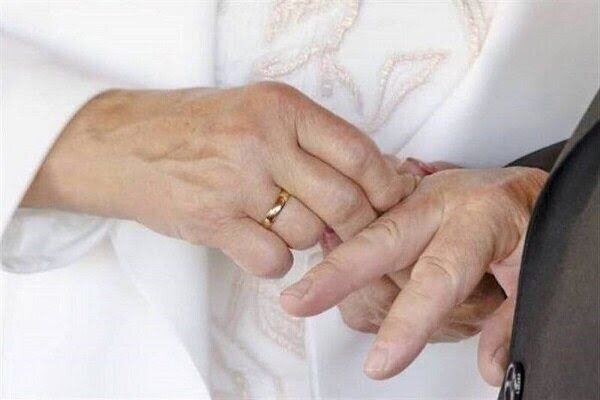Tehran – According to the Civil Registration Agency, a total of 32,196 marriages at age 50 have been registered nationwide in the past in Iranian years (March 2024 to March 2025).
Of the registered marriages, 22,668 and 9,527 men and women were each over 50 years of age, ISNA reports.
Marriage will be 2.3 times divorced in the fall
According to the Civil Registration Agency, the fall season of 2024 saw around 118,450 marriages and 49,738 divorces registered nationwide.
The number of marriages has increased by 14,168 compared to summer. However, the number of marriages has declined by 13,691 compared to the 132,141 marriages registered in the fall of 2023, Mehr’s news agency reported.
Additionally, the divorce rate fell 4.439 cases compared to 54,177 registered cases at the same time last year.
Youth Population Act stabilizes total fertility rates
The enactment of the Youth Population Act has stabilized total fertility rates and has seen a slight increase in the general fertility index over the past two years.
According to the IRNA, after an approximately 20% increase in the seven-year decline, the birth rate remains stable at around 1.6.
The total fertility rate has decreased sharply as the total fertility rate reached 1.570 million to 1.057 billion in 1402 (2023-2024), from 1570 million in 1394 to 1.057 billion.
Since 1401 (March 2022-March 2023), the decline in fertility has ceased.
Total fertility rates fell from about 2 children per woman to 1.6 children per woman.
The total reproductive rates in Iran in 1396 (2017-2018), 1397 (2018-2019), 1398 (2019-2020), 1399 (2020-2021), and 1400 (2021-2022) were 2,09, 1.95, 1,74, 1.65 and 1.61.
Despite providing incentives to encourage childbirth in line with youth population laws, the desired growth of the youth population has not yet been achieved.
At best, Iran’s population with a total fertility rate of 2.5 reaches 102,890,000 over the next seven years, the IRIB cites Mohammad-Javad Mahmoudi, an employee of a civil registered organisation.
In May 2024, Hasan Farshidi, a health ministry official, said two years after the implementation of the Act on Supporting Families and Youth, the investigation showed that the Ministry of Health plays a central role in implementing the law.
“Since the implementation of the law, the number of births for mothers aged 20 to 24 has increased significantly,” the official added.
The proportion of mothers giving birth to three children increased from 16% in Iran in 1398 (March to March 2019) to 18.97% in 1402 (March 2023 to March 2024), and even the fourth birth increased from 5% to about 7%, Farshidi said.
According to Saber Jabbari, a health ministry official, men and women over 60 years old make up about 11.5% of Iran’s population.
For the time being, older women are reported to account for 52.3% of the total population, surpassing males (47.7%).
Aging of an individual means an increase in life expectancy. However, population aging indicates a change in the distribution of the country’s population to older ages, which is not a favorable indicator. In other words, the number of young people in society decreases compared to older people. This is one of the most important challenges facing the country.
mt/mg

